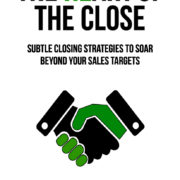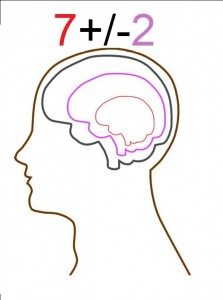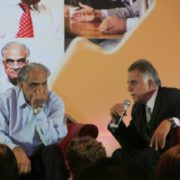Seven Plus Minus Two from NLP
Have you ever walked into a meeting late, because of heavy traffic en-route, and been unable to concentrate on agenda at hand right away? Does a part of you want to focus on the work while another part of you is still anxious, stressed and testy about the traffic conditions you just recovered from?
Or, at times, have you tried to pitch a presentation to an important customer, behind a large desk, who is signing papers, taking calls, punching his keyboard, sipping coffee while politely asking you to keep on talking. He claims he can multi-task and is listening to you but at the end of your pitch you still feel let down.
Meeting maladies similar to these can be resolved by understanding, in depth, another principle of Neuro Linguistic Programming: At any given moment, our conscious mind, can only hold and juggle with seven plus or minus two chunks of thoughts.
For example, while driving through traffic, you are intensely navigating, formulating an explanation for your tardiness, reviewing your planned presentation, pondering upon discussions or activities you may have concluded earlier, reading your messages on your phone, planning the evening, regretting not having eaten a healthy breakfast, thinking of the family, etc; All this is hyper-mental activity. And, some of the areas that we reactively think about can be switched off to be able to calm yourself and focus on what is crucial. Just like a computer, the desktop of our mind can be faster and more efficient if it is running fewer applications at a given moment.
Your obvious question would be how do I do this? That’s correct. For yourself, you need to become conscious of the fact that you are running in a hyper mode and then zero in on your breathing and focus on it. A few minutes of paying attention to your breathing will shut down several less important issues the desktop of your mind may be juggling. If your mind wants to react, stop and go back to focusing on your breathing. In the long term practice will make you perfect.
How do you handle the customer behind the large desk, who wants you to go on talking when you know he is running in a hyper-mode and may not be giving you a hundred per cent attention? Stop speaking, slow down your presentation, deliberate on your pauses, and politely ask him to finish signing the papers or answering that email. Like: ” I see you like answering off important emails promptly?” That’ll break his trance, his pattern and he will look up and give you attention.
Ask him non-probing questions about the biggest chunk of thought he may be juggling on the desktop of his mind. Do or say anything that you feel will help him switch off some of the activities and give you better attention. A word of caution: Don’t be cheeky or obvious about it because that may embarrass him.
In summary, powerful leadership conversations are also about understanding and managing the subjective state rather than just what is on the surface. Practice these methods and you will find yourself achieving a lot more in half the time and at half the cost.
Find more insights like this one in my books on Amazon
Connect with me on Facebook/Raju Mandhyan










Leave a Reply
Want to join the discussion?Feel free to contribute!